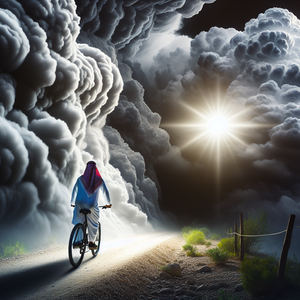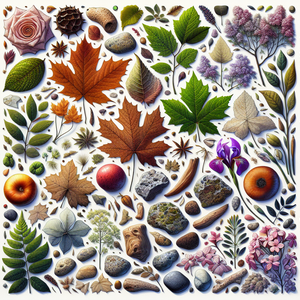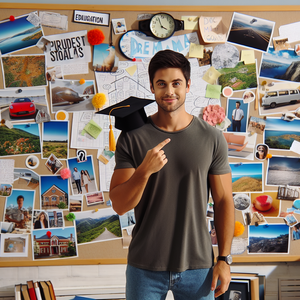The Intersection of Art and Architecture in the Metaverse

Historically, art and architecture have been distinct disciplines, each governed by its own principles and practices. However, the metaverse challenges these conventions by offering a space where the two can seamlessly integrate. In this digital realm, architects can incorporate artistic elements into their designs, while artists can explore architectural concepts to elevate their creations. This fusion facilitates a dynamic interplay of form, function, and expression, resulting in virtual environments that are not only visually captivating but also deeply engaging. The potential for integrating art and architecture in the metaverse is vast. By using virtual and augmented reality technologies, creators can explore new dimensions of design that transcend physical constraints. For instance, an architect might integrate visual art elements into a digital building’s facade, creating a dynamic structure that changes with user interaction, or an artist might use architectural principles to design spatial compositions that invite exploration and engagement.
Collaborative Efforts: Pushing Creative Boundaries
The collaborative potential within the metaverse is one of its most exhilarating aspects. Artists and architects can join forces to push the boundaries of what is achievable in both fields. Architects can collaborate with digital artists to design virtual buildings that are not constrained by physical limitations. These structures can feature gravity-defying forms, vibrant colors, and interactive elements that engage users in novel ways. Conversely, artists can draw inspiration from architectural principles to craft immersive installations that transform virtual spaces into experiential works of art. A testament to this collaboration is the development of virtual environments that serve dual purposes as both artworks and functional spaces. For example, digital artist Refik Anadol’s work in data-driven architecture utilizes vast data sets to inform the design of virtual buildings, offering an immersive experience that combines artistic vision with architectural innovation.
Innovative Projects: Blurring the Lines
Several projects in the metaverse exemplify the successful integration of art and architecture. One notable example is the "Virtual Bauhaus," a digital reconstruction of the iconic Bauhaus school, which serves as a platform for exploring the intersection of art, design, and technology. This project not only preserves the cultural heritage of the Bauhaus movement but also reimagines its principles in a virtual context, inviting users to engage with the space in novel ways. Another groundbreaking project is the "Metaverse Art Gallery," a virtual space where architects and artists collaborate to create interactive exhibitions. These exhibitions challenge traditional notions of art viewing by incorporating elements such as virtual reality, augmented reality, and interactive design. Visitors can navigate through the gallery, experiencing the artwork in a dynamic and immersive environment that transcends the limitations of physical space.
Artistic Expression and Architectural Innovation
The metaverse also offers artists and architects the opportunity to experiment with new forms of expression and innovation. Digital tools and technologies allow creators to explore unconventional materials, lighting, and spatial configurations. For instance, architects can employ parametric design techniques to generate complex geometries that would be impossible to construct in the real world. Artists, on the other hand, can use digital media to create kinetic sculptures or light installations that react to user interactions, creating a sense of agency and participation. This blending of artistic and architectural elements in the metaverse enables creators to transcend traditional artistic boundaries and explore new forms of creativity. Whether through the use of algorithmic design, generative art, or interactive installations, the metaverse provides a fertile ground for experimentation and innovation.
The intersection of art and architecture in the metaverse represents a paradigm shift in how we conceive and experience both disciplines. By breaking down traditional boundaries and embracing collaboration, artists and architects are redefining the possibilities of design and expression in virtual spaces. As the metaverse continues to evolve, it promises to be a fertile ground for innovation, providing a platform for creators to explore new frontiers and inspire future generations. In this digital age, the fusion of art and architecture in the metaverse not only enriches our virtual experiences but also challenges us to rethink the very nature of creativity itself. As creators continue to explore the possibilities within the metaverse, we can expect to see even more groundbreaking projects that blur the lines between art and architecture, offering new ways to experience and interact with the digital world. In doing so, the metaverse becomes a space not only for innovation but also for reimagining the potential of human creativity.
Virtual Reality Architect
Oculus, HTC
Core Responsibilities and Required Skills
Design and develop immersive architectural environments within virtual reality platforms.
Utilize software like Unity or Unreal Engine to create interactive 3D models.
Collaborate with artists to integrate aesthetic elements and artistic concepts.
Digital Art Curator
Sotheby’s, Christie's
Core Responsibilities and Required Skills
Curate and organize digital art exhibitions in virtual spaces, leveraging platforms like Decentraland or Cryptovoxels.
Collaborate with artists to ensure seamless integration of interactive and multimedia elements.
Analyze and incorporate emerging trends in digital art and technology.
Metaverse Experience Designer
Roblox, Epic Games
Core Responsibilities and Required Skills
Develop user-centric experiences in the metaverse that blend art, architecture, and interactive media.
Employ UX/UI design principles to enhance user engagement and accessibility.
Work with cross-disciplinary teams to ensure cohesive and innovative project outcomes.
Data-Driven Artist
tech firms, art collectives, public institutions
Core Responsibilities and Required Skills
Use data visualization techniques to create dynamic art installations that react to real-time data within virtual environments.
Collaborate with architects to incorporate art into digital structures.
Proficient in tools like Processing or TouchDesigner for generative art creation.
Augmented Reality Space Designer
Apple, Google
Core Responsibilities and Required Skills
Design augmented reality (AR) environments that integrate artistic and architectural elements for enhanced user interaction.
Utilize tools like ARKit or ARCore to develop and implement spatial designs.
Collaborate with developers and artists to ensure technical feasibility and artistic integrity.


